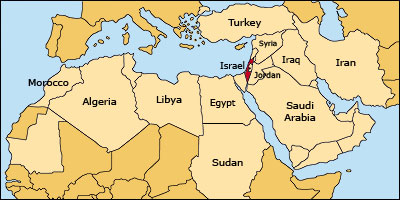|
The
History
of Israel
- A Chronological Presentation

Introduction
In order
to understand the Arab-Israeli conflict, as it unfolds
today, it is necessary to have an accurate picture of
the historic circumstances that led to the establishment
of the Jewish state and the Arab world's rejection of
it, as well as the developments that have since then
shaped the conflict.
This historic presentation covers the most important
events in the history of Israel, from the Jewish kingdoms
of David and Solomon to the collapse of the Oslo peace
process in the fall of 2000. The remaining period from
the turn of the millennium until today will be added
as soon as possible.
It is not the intention to dig into and analyse every
detail and contentious issue, but rather to provide
the reader with a basic historic knowledge and understanding
of the conflict's causes and effects.
The material can be read chronologically from beginning
to end, or may be used as a work of reference, allowing
the reader to select any specific period of interest.
If, for instance, you want to focus on the establishment
of the modern state of Israel, you may want to skip
the first chapter, "Early
Times", and move directly to Chapter
Two.

Let's start by placing Israel on the map. Israel is
located at the eastern end of the Mediterranean Sea,
where Europe, Africa and Asia meet. The country borders
on Lebanon and Syria in the north, Jordan to the east
and Egypt to the south.
The conflict between Israel and its Arab neighbors
seems to claim a lot of attention in the world media,
but the area that includes both Israel, Gaza and the
West Bank actually only comprises about 28.000 square
kilometers - or approximately the size of Belgium
or Hawaii. On the map you can see Israel (in red)
compared to the surrounding Arab or Muslim countries
that make up the rest of the Middle East and North
Africa.
Follow the chronological presentation by clicking the
link below, or go directly to a certain period by using
the menu on the left.
Continue:
Chapter 1 - Early Times
Back
|